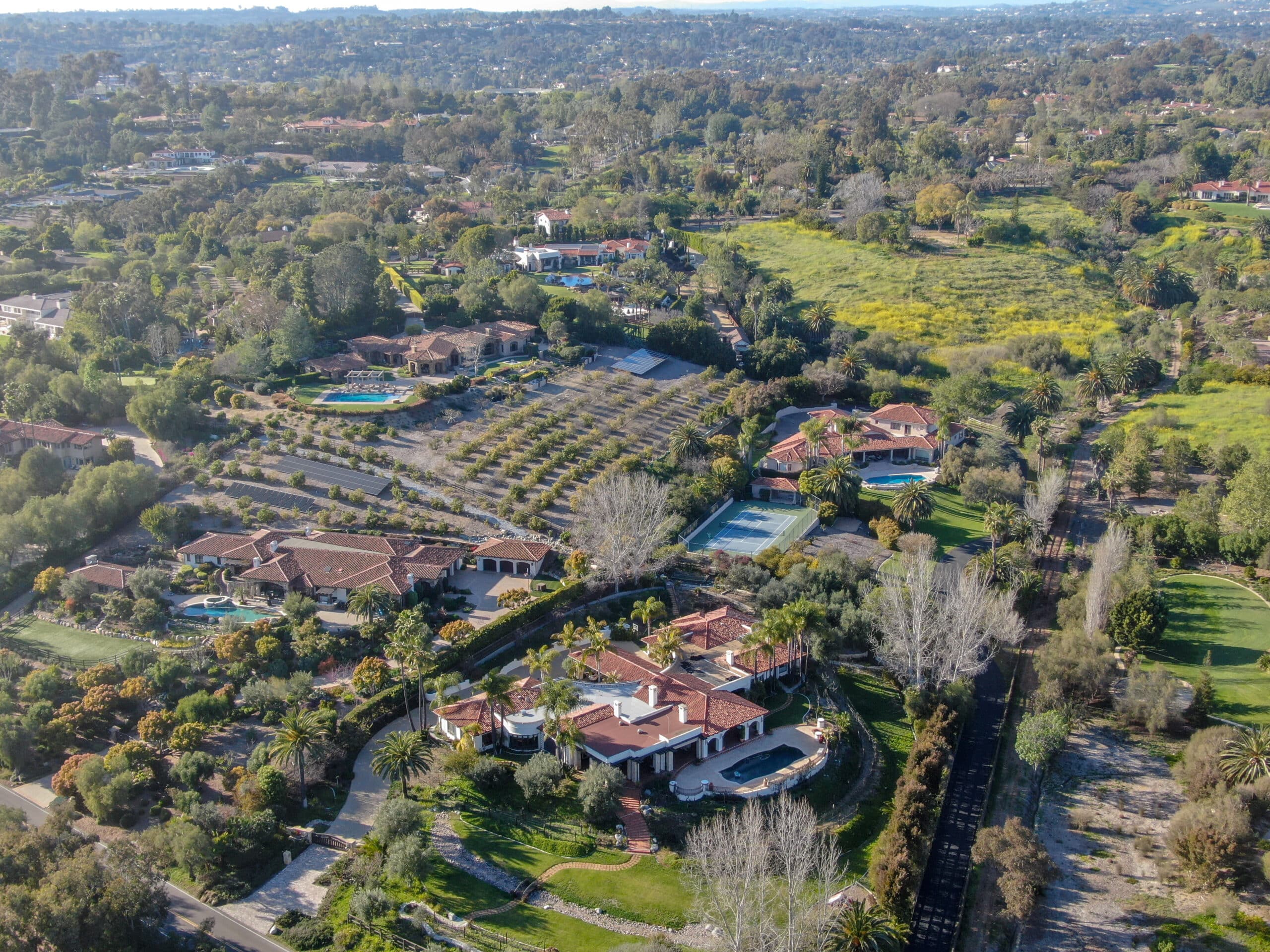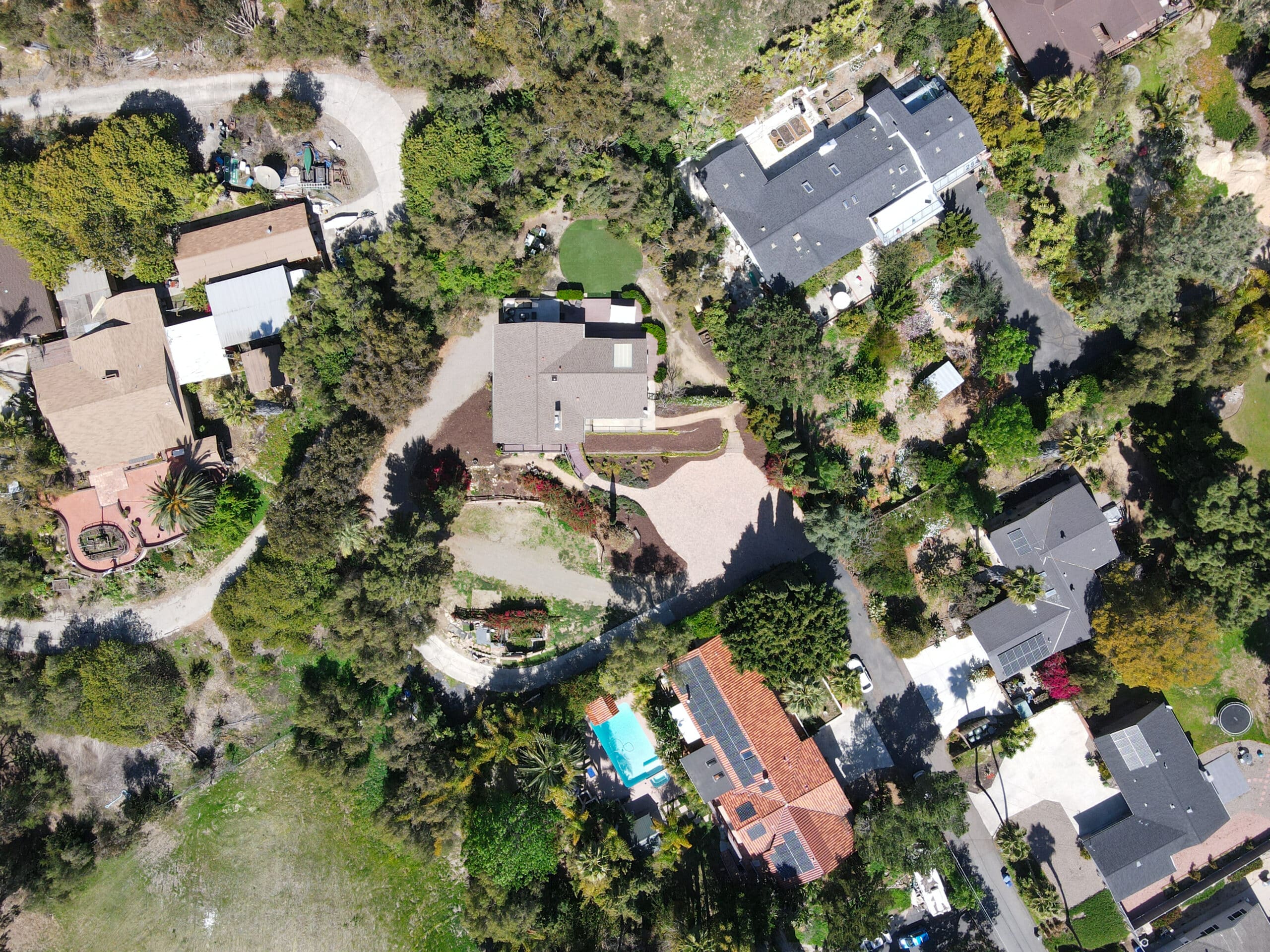Estimated reading time: 0 minutes
In today’s world, where security risks are ever-changing and increasingly sophisticated, the importance of advanced estate security cannot be overstated. Through “Enhancing Safety: A Comprehensive Guide to Estate Security,” Global Risk Solutions, Inc. provides an expertly crafted manual tailored for the highest level of estate protection. This article delves deeply into the complexities of contemporary security threats and showcases the latest in strategic defenses, cutting-edge technology, and meticulous planning. Aimed at individuals and professionals prioritizing the utmost safety for their estates, this guide is a blend of thorough research and practical insights. It’s a resource designed to elevate your estate’s security to the highest standard, offering peace of mind in an unpredictable world. Discover the art of creating a secure haven with us, where innovative solutions meet personalized protection strategies.
Table of contents
- Introduction to Estate Security
- Architectural Integration of Security
- Advanced Surveillance Systems
- Perimeter Security and Access Control
- Cybersecurity Measures for Estate Security
- Internal Security Measures
- Security Personnel: Training and Management
- Continual Evaluation and Improvement of Security Measures
- Conclusion
Introduction to Estate Security
Understanding the Landscape of Modern Security Threats
In estate security, comprehending the spectrum of modern security threats is paramount. Today’s challenges are not just about deterring burglaries or trespassing; they have evolved into more complex scenarios, including cyber threats, domestic and international terrorism, and sophisticated criminal networks. The dynamics of these threats are constantly changing, necessitating an adaptable and comprehensive security strategy. Estates are not merely homes but symbols of status, often housing invaluable assets and embodying personal sanctuaries. Therefore, understanding the potential risks and the nature of adversaries is the first step toward developing a robust defense mechanism.
Principles of Effective Estate Security Planning
The foundation of securing an estate rests on strategic planning, which involves several fundamental principles. Firstly, security measures should be proactive rather than reactive, anticipating potential threats before they materialize. Secondly, the approach must be holistic, integrating physical, technological, and human elements. Thirdly, confidentiality and discretion are vital, especially in estates where privacy is as much a priority as security. Finally, scalability and flexibility are crucial, allowing security strategies to evolve with changing circumstances and technological advancements. Effective planning thus requires a deep understanding of the estate’s unique attributes, including its layout, resident lifestyle, and potential security vulnerabilities.
The Role of Risk Assessment in Estate Security
Risk assessment forms the backbone of any security strategy. This process involves identifying potential security risks, evaluating their likelihood and potential impact, and prioritizing them based on their severity. For estate security, this means not only assessing the physical vulnerabilities of the property but also understanding the personal risks the residents face, such as their public profile, lifestyle, and specific threats they might be exposed to. A thorough risk assessment enables security professionals to tailor a security plan that addresses the unique characteristics and needs of the estate and its inhabitants, ensuring that resources are allocated efficiently to mitigate the most significant risks.
Architectural Integration of Security
Designing for Security: Architectural Considerations
The architectural design of an estate plays a crucial role in its overall security. Security should be an integral part of the design process, not an afterthought. This involves creating a layout that minimizes vulnerabilities and maximizes natural surveillance. Key considerations include the placement of entrances and exits, sight lines, the location of security checkpoints, and the integration of safe rooms. The goal is to create an inherently secure and aesthetically pleasing design, deterring potential threats through its structure. Additionally, the use of materials that are both resilient and functional can enhance security without compromising the estate’s elegance.
Landscaping as a Security Tool
Landscaping, often seen purely as an aesthetic element, can be strategically used to enhance estate security. Thoughtful landscaping can provide natural barriers that control access and movement. For instance, using thorny plants near potential entry points can act as a natural deterrent, while strategically placed trees and shrubs can obstruct sight lines for possible intruders. However, it’s crucial to balance this with maintaining clear visibility for surveillance purposes. The goal is to create an environment that welcomes residents and guests while unwelcoming to unauthorized individuals.
Integrating Security into Interior Design
Interior design in high-security estates must consider both functionality and aesthetics. This involves the discreet integration of security features into the home’s interior. For example, bullet-resistant windows and doors can be designed to blend seamlessly with the estate’s style. Advanced locking mechanisms, panic buttons, and hidden safe rooms can be incorporated to make them accessible to the residents but not noticeable to outsiders. The objective is to maintain the comfort and luxury of the estate while embedding security measures so that they do not intrude upon or disrupt the residents’ daily lives.
Advanced Surveillance Systems
State-of-the-Art Surveillance Technology
State-of-the-art surveillance technology plays a pivotal role in the vanguard of estate security. Modern surveillance systems extend beyond primary cameras, encompassing a range of tools such as thermal imaging, facial recognition, and motion detection technologies. These systems are designed to offer round-the-clock monitoring, providing real-time alerts to security personnel. Advanced analytics can recognize unusual patterns and potential threats, ensuring a proactive response. Integrating these technologies requires a strategic approach, placing devices at optimal locations for maximum coverage while maintaining the estate’s aesthetic integrity.
The Integration of Artificial Intelligence in Surveillance
Artificial Intelligence (AI) has revolutionized surveillance capabilities. AI-powered systems can analyze vast amounts of data from various sources, detecting anomalies that might elude human oversight. These systems learn from past incidents, enhancing their predictive capabilities over time. For instance, AI can distinguish between routine movements and suspicious activities, reducing false alarms and focusing on genuine threats. Additionally, AI can assist in identity verification processes and manage access control, ensuring that only authorized individuals enter sensitive areas of the estate.
Remote Monitoring and Response Coordination
Remote monitoring is critical to modern surveillance, enabling security teams to oversee estate security from centralized locations. This approach allows for continuous monitoring of live feeds, ensuring potential security breaches are identified and addressed promptly. The ability to coordinate responses in real-time is crucial in emergencies. This involves the on-site security team and coordination with external law enforcement and emergency services. Effective remote monitoring relies on robust communication systems and protocols, ensuring that every security team member, regardless of location, is informed and ready to respond to any incident.
Perimeter Security and Access Control
Reinforcing the First Line of Defense: Perimeter Security
Perimeter security is the first line of defense in safeguarding an estate, acting as both a physical barrier and a psychological deterrent. It combines walls, fences, and gates strategically reinforced with surveillance and alarm systems. Advanced perimeter security solutions may include vibration-sensing fencing, infrared barriers, and motion detectors. These systems are designed to detect intrusion attempts and immediately alert the security team. The perimeter design should deter unauthorized access and provide clear demarcation of private property, ensuring that any approach towards the estate is monitored and controlled.
Sophisticated Access Control Systems
Access control is fundamental in managing who enters and leaves the estate, ensuring that only authorized individuals gain entry. Modern access control systems go beyond traditional locks and keys, incorporating biometric verification, such as fingerprint and iris recognition, and sophisticated card systems that can be programmed for specific individuals and times. These systems can also be integrated with other security measures, allowing for comprehensive monitoring of movements within the estate. The objective is to create a seamless yet impenetrable system that ensures easy access for residents and authorized visitors while robustly protecting against unauthorized entry.
Monitoring and Managing Visitor Access
Effectively monitoring and managing visitor access is crucial in maintaining estate security. This involves pre-screening visitors, recording their entry and exit times, and ensuring they are accompanied by authorized personnel during their stay. Visitor access systems can be integrated with surveillance and communication systems, allowing for real-time monitoring and ensuring that any visitor’s presence is accounted for at all times. These systems contribute to overall security by guaranteeing a documented trail of visitor activity, aiding in the prevention and investigation of potential security breaches.
Cybersecurity Measures for Estate Security
Protecting Digital Infrastructure
In today’s interconnected world, cybersecurity is essential to estate security. High-net-worth individuals often face cyber threats like hacking, identity theft, and digital espionage. Protecting the estate’s digital infrastructure involves securing home networks, personal devices, and smart home systems. This includes using advanced firewalls, intrusion detection systems, and secure Wi-Fi networks. Regular updates and patches for all software are crucial to protect against vulnerabilities. Additionally, encrypted communication channels for internet and intranet connections safeguard sensitive information from being intercepted or compromised.
Managing Smart Home Vulnerabilities
Smart home technologies, while offering convenience and enhanced security, can also introduce vulnerabilities if not properly secured. These systems, including automated lighting, climate control, and entertainment systems, should be integrated into the estate’s security strategy. It’s vital to ensure these devices are from trusted manufacturers with robust security protocols. Network segmentation can be employed, isolating critical systems from general-use networks to prevent potential breaches from spreading. Regular security audits of smart home systems are essential to identify and address any new vulnerabilities that may arise.
Training and Awareness for Residents and Staff
Cybersecurity awareness is as important as technological solutions. Residents and staff should be trained on basic cybersecurity practices, such as recognizing phishing attempts, using strong passwords, and understanding the importance of not sharing sensitive information. Regular workshops and updates on the latest cyber threats can empower them to act as an additional defense against cyber attacks. This human element of cybersecurity is often the most critical, as even the most sophisticated systems can be compromised through social engineering or human error.
Internal Security Measures
Ensuring In-House Security Integrity
The internal security of an estate is as crucial as its external defenses. This involves implementing measures to safeguard against internal threats, such as theft, espionage, or sabotage. Key elements include secure storage for valuables, controlled access to sensitive areas, and surveillance systems within the estate. Moreover, establishing strict protocols for handling and disposing sensitive information is vital. Regular security audits and checks can help identify potential internal vulnerabilities and ensure that all security measures function effectively.
The Role of Discreet Surveillance Inside the Estate
While maintaining privacy and comfort for residents, discreet surveillance inside the estate is essential. This can include hidden cameras in strategic locations, motion sensors, and electronic monitoring of access points. The goal is to provide comprehensive tracking without intruding on the residents’ daily lives. These systems should be designed to blend into the estate’s interior, maintaining the aesthetic appeal while serving their security purpose. Additionally, intelligent analytics can help identify unusual activities or breaches within the estate without constant human monitoring.
Integrating Emergency Response Systems
An effective internal security strategy includes integrating emergency response systems, including fire alarms, medical emergency systems, and disaster response protocols. These systems should be easily accessible and straightforward, ensuring a quick response in critical situations. Regular drills and training for residents and staff are essential to familiarize them with emergency procedures. Integrating these systems with external emergency services is crucial, ensuring that help can be summoned immediately.
Security Personnel: Training and Management
Selection and Training of Security Staff
The selection and training of security personnel are critical components of estate security. Staff members must be thoroughly vetted, including background checks and references, to ensure they are trustworthy and have the necessary skills and temperament for the role. Training should cover physical security measures, emergency response, first aid, and cybersecurity awareness. Regular refresher courses and updates on the latest security techniques and technologies are essential to maintain a high level of proficiency. The security team should also be trained in discretion and etiquette to seamlessly blend into the estate environment while performing their duties effectively.
Operational Protocols for Security Teams
Operational protocols for security teams are essential for maintaining an organized and effective security operation. These protocols should cover various scenarios, from routine patrols and visitor management to emergency response and crisis management. Clear communication channels and command structures are necessary to ensure coordinated actions and quick decision-making in critical situations. Using technology, such as real-time communication systems and mobile apps, can enhance the efficiency and responsiveness of the security team.
Balancing Visibility and Discretion in Security Operations
Balancing the visibility and discretion of security operations is a crucial aspect of estate security. While a visible security presence can act as a deterrent, it is essential to maintain the privacy and normalcy of the estate environment. This involves strategic positioning of security personnel and using plainclothes officers where appropriate. The security team should be trained to perform their duties unobtrusively yet effectively, ensuring the safety and comfort of the estate’s residents and guests.
Continual Evaluation and Improvement of Security Measures
Regular Security Audits and Assessments
Regular audits and assessments are crucial to ensure the ongoing effectiveness of estate security measures. These evaluations should be comprehensive, covering all security aspects, from physical barriers and surveillance systems to cybersecurity protocols and staff performance. External security experts can provide unbiased insights and identify potential areas for improvement. The findings from these audits should be used to update and refine the security strategy, ensuring it remains robust against evolving threats.
Adapting to Technological Advancements and Emerging Threats
The security landscape is constantly evolving, with new technologies and emerging threats. Staying abreast of these changes is essential for maintaining an effective security posture. This involves adopting new technologies and methods and understanding and preparing for new threats. Continuous learning and adaptation are critical, requiring a proactive approach to security management. This adaptability ensures that the estate’s security measures are current and forward-thinking, ready to counter future challenges.
Fostering a Culture of Security Awareness
Creating a culture of security awareness among residents, staff, and visitors is fundamental to the overall effectiveness of estate security. Everyone within the estate should know the importance of security measures and their role in maintaining them. Regular training sessions, security briefings, and clear communication of security policies can foster this culture. Encouraging a sense of shared responsibility for security can lead to more vigilant behavior and prompt reporting of suspicious activities, significantly enhancing the estate’s security ecosystem.
Conclusion
Summarizing Key Insights and Recommendations
In conclusion, estate security is a multifaceted challenge that requires a comprehensive and adaptable approach. Key insights include the importance of integrating security into the architectural design, the use of advanced technology in surveillance, stringent access control, robust cybersecurity measures, and the crucial role of trained security personnel. Regular evaluation and adaptation to emerging threats and technologies are vital. Also, fostering a security awareness culture is essential for a holistic security strategy.
Emphasizing the Importance of a Customized Security Approach
Each estate is unique, and so are its security needs. A customized approach tailored to the estate’s and its residents’ specific characteristics and requirements is imperative for adequate security. This customization should be reflected in every security planning and implementation aspect, from selection to training of security personnel.
Looking Forward: The Future of Estate Security
Looking forward, estate security is set to become more integrated, intelligent, and responsive. Using AI, IoT, and other emerging technologies will enhance the ability to predict and prevent security breaches. However, the human element remains irreplaceable, and the synergy between technology and trained personnel will define the future of estate security. It’s a dynamic field, and staying ahead requires continuous learning, innovation, and adaptation.












